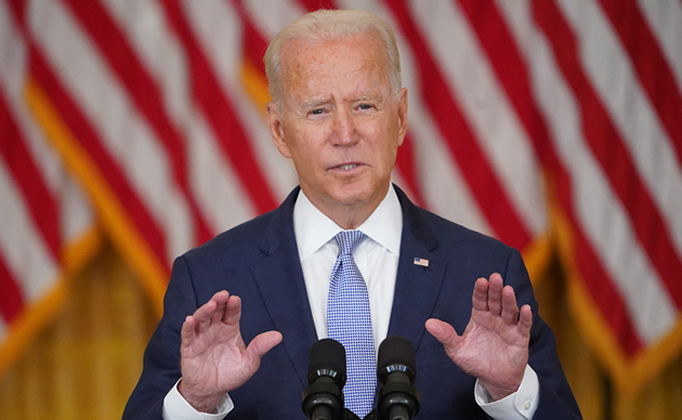From December 13 to 15, about 49 heads of state and government or their representatives and other top government officials from Africa will be in Washington DC on the invitation of United States President Joe Biden for a second summit of the US and African leaders. The first of such summit was convened in 2014 by former President Barack Obama with a follow-up summit coming eight years after the first one. According to the US government, ‘the summit will demonstrate the US enduring commitment to Africa and will underscore the importance of US-Africa relations and increased cooperation on shared priorities.” The summit will be coming against the backdrop of the new US strategy toward sub-Saharan Africa released about three months ago in which the US acknowledged that “sub-Saharan Africa is critical to advancing our global priorities,” being “one of the world fastest growing populations, largest free trade areas, most diverse ecosystems and one of the largest regional voting groups in the United Nations. The strategy reframes the region’s importance to US national security interests.”
However, major concerns for Africa which are mostly investments and trade, peace and security, inclusive and sustainable development, are vital categories in dealing with the issues of poverty. Social and political challenges in Africa have considerably nosedived in Africa-US relations at least since the first summit was held.
The violent US-led NATO regime change intervention in Libya, which left the country in complete chaos following the brutal killing of its leader, seriously undermined peace and security in Africa, especially in the Sahel, Western and Central regions of Africa. The brutal insurgency of the Boko haram sect in Nigeria and the rise of other criminal elements in the region were largely inflamed and driven by the flows of illicit weapons from the huge Libyan military armoury flung wide open and left unsecure by the US-led NATO military intervention.
It should never be forgotten that the US-led violent regime change in intervention in Libya in 2011 came against the background of a concerted effort of Africa through the regional body, the African Union, to pursue a negotiated settlement of Libya’s political conflict.
On the economic front, Washington needs to step up because the facts and figures are brutally abysmal. The US export of goods to Africa was $26.7bn in 2021, a 30 per cent drop from a high of $38.1bn in 2014. Two-way trade in 2021 was just mere 1 per cent of US total global commerce at $64.3bn, down from a high of $141.9bn in 2008.
Prior to the first summit in 2014, former President Bill Clinton has initiated the Africa Growth and Opportunity Act in 2000. It was a trade preferential programme and part of wider legislation Clinton designed to strengthen US trade ties with Africa and the Caribbean. However, despite the early enthusiasm that greeted the Act, Africa-US trade has remained underdeveloped and very modest. After the initial jump, exports fell to their 2000 level with less than 1 per cent of imports of the US in 2019 coming from Sub-Saharan Africa. Apart from South Africa, whose mostly automotive exports constitute more than 50 per cent of the total region’s export with the US in 2021, the slump in exports from other countries in the region was obvious.
For example, textiles and apparel, observed as the most AGOA-related job-generating sector, especially in East Africa, considerably slumped. AGOA which was renewed in 2015 will expire in 2025. Its process and trajectories since its inception have been tainted by political maneuvering by the US.
The second President of the American Institute for Foreign Trade, William Schurz, stated that “borders frequented by trade seldom need soldiers.” Would the US convert its perennial obsession with security and geopolitics to trade and investment, especially in its relations and cooperation with Africa? Already in her new strategy toward Sub-Saharan Africa, Washington craftily set the stage to launch Africa into a theatre of geopolitical competition among major powers.
It claimed that “the People’s Republic of China… sees the region (Africa) as an important arena to challenge the rules–based International order, advance its own narrow commercial and geopolitical interests, undermine transparency and openness, and weaken US relations with African peoples and governments.” In the same breath, the new strategy accused Russia of viewing “the region as a permissive environment for private military companies, often fomenting instability for strategic and financial instability…”
It is no gainsaying that Africans and their respective governments see either the partnership with China or cooperation with Russia differently from the way Washington has crafted it. And using any forum, whether of the upcoming leaders’ summit or any other one, to impose such toxic definitions of the relations between Africa with China or Russia will not fly, especially in the face of what Africans know and experience about the relationship. Any such effort by the US to canvass its view of Africa’s relations with China on Africa would be utterly counterproductive.
During the same period in 2021 when Africa’s two-way trade with the US was at a historic low of barely $64.3bn, China has maintained the momentum of Africa’s largest trading partner, with two-way trade reaching a historic high of $254bn.
In 2018 at the 3rd summit of the Forum of China-African Cooperation in Beijing, China announced the establishment of the China-Africa Economic and Trade Expo to be organised biennially by its Ministry of Commerce to deepen economic and trade cooperation with Africa. Despite the outbreak of the COVID-19 pandemic, the expo has held on schedule. At the second edition of the expo which was held last year, about 176 items in trade, investment, project contracting and strategic cooperation with a value of $15.93bn were signed.
Also during the eighth ministerial conference of FOCAC held in Senegal last year, President Xi Jinping announced nine cooperation programmes between Africa and China, among which is the iconic trade promotion under which Beijing would open ‘green lanes’ for African agricultural exports to China. Measures would be taken by China to “speed up the inspection and quarantine procedures and further increase the scope of products enjoying zero-tariff treatment… in a bid to reach $300bn in total imports from Africa in the next three years” from 2021. In addition, China will build a pioneering zone for in-depth China-Africa trade and economic cooperation and a China-Africa Industrial park for Belt and Road cooperation in China.
While Beijing does not engage in the perennial ideological luxury of lecturing Africa about whose activities on the continent are ‘harmful,’ and why she is a preferred friend, the facts on the ground in Africa speak louder than voice.
In the U.S-Africa Leaders’ Summit in Washington this week, it is most likely that African leaders will demonstrate their openness for meaningful, credible and purposeful partnership with the world. Also, the US and Washington can use the moment to demonstrate genuine goodwill beyond lofty rhetoric to define a practical roadmap in supporting Africa to tackle the challenges of poverty through trade and investment, and not just humanitarian aid.
The US can through this summit breathe life into its fledging Build Back Better World initiative by outlining specific undertakings in infrastructure construction in Africa. The Belt and Road Initiative, China’s flagship framework of international cooperation, has significantly boosted the construction of critical infrastructure in Africa, fostering connectivity within and across countries in the region.
Africa’s largest economy, Nigeria, has just commissioned her first-ever deep sea port built under the framework of the Belt and Road partnership cooperation which Nigeria signed in 2018. The historic deficit of infrastructure connectivity, which has previously hobbled the pan-African notion of regional integration and unity, is gradually being overcome with the continent’s pragmatic cooperation with China. The US can add momentum to the process of enigmatic Africa’s renaissance through trade, investment, and infrastructure construction which are critical indices for social and political stability and democratic resilience in the region.
The US – Africa cooperation has bright prospects, but must be nurtured through a process of mutual respect and acknowledgement of the different and unique historical trajectories of the two sides, while working together to secure and expand common grounds. The US-Africa Leadership Summit will be more mutually rewarding if it finds institutional ambience in Washington’s routine schedule rather than just an arbitrary convenience of any US leader after eight years of ceaseless changes in Africa. Following the lacuna since the first summit in 2014, Washington might just be learning the reality of China’s historic opportunity to the continent for which Africa is diligently and dutifully engaging.
A report by a US-based international management consortium, Mckinsey & Company, in 2017, from a field study on how Africa and China are evolving in their engagement, stated, “We evaluated Africa’s economic partnerships with the rest of the world across five dimensions; trade, investment stock, investment growth, infrastructure financing, and aid. China is in the top four for Africa in all these dimensions. No other country matches this depth and breadth of engagement.”
The broad sentiment in Africa to the expectations of the Washington Summit is that it should deliver on the tangible and practical needs of the continent, especially in trade and investment, beyond the effusions of lofty rhetoric.











